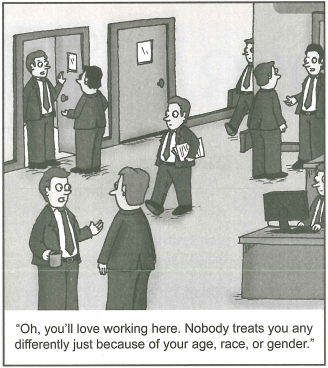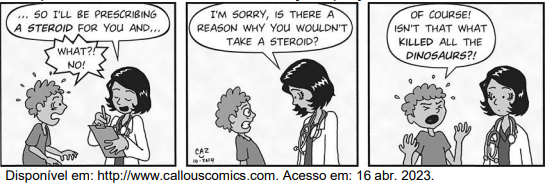Questões de Inglês - Reading/Writing - Comics - comic strips, cartoon, graphic novel
Leia a tira de Bill Amend para responder à questão.

(www.pressthebuttons.com)
No primeiro quadrinho, a fala “Is she out of her mind?!” indica que o menino
Para responder à questão, examine o cartum de Will Santino, publicado em sua conta do Instagram, em 13.04.2022.

"Straw1 is actually very popular right now."
1straw: palha.
A análise contextualizada do cartum permite caracterizar o lobo como
Para responder à questão, considere o texto a seguir.
TEXTO
Happiness-cartoon

Fonte: SCHAPER, K. Happiness-cartoon. 15 fev. 2017. Disponível em: https://www.kimschaper.com/does-happinessreally-exist/happiness-cartoon-2/. Acesso em: 19 maio 2023.
Considerando os balões de fala e as imagens do texto, os termos sublinhados no segmento “Where did you find that? I've been searching for it everywhere” referem-se a

Disponível em: www.cartoonstock.com. Acesso em: 25 out. 2021.
Ao retratar o ambiente de trabalho em um escritório, esse cartum tem por objetivo
A comic strip is a sequence of cartoons which usually displays brief humor with text in balloons.

Considering this comic strip above, it is correct to state that
Observe the cartoon.

Based on the information from the text “Pan American Health Organization provides technical support to improve the health of Yanomami indigenous peoples in Brazil” and the cartoon above, we can affirm that the big problem(s) faced by the Yonamami is/are
Faça seu login GRÁTIS
Minhas Estatísticas Completas
Estude o conteúdo com a Duda
Estude com a Duda
Selecione um conteúdo para aprender mais:





